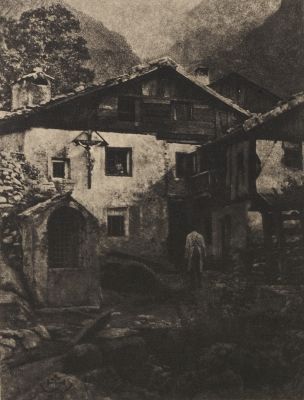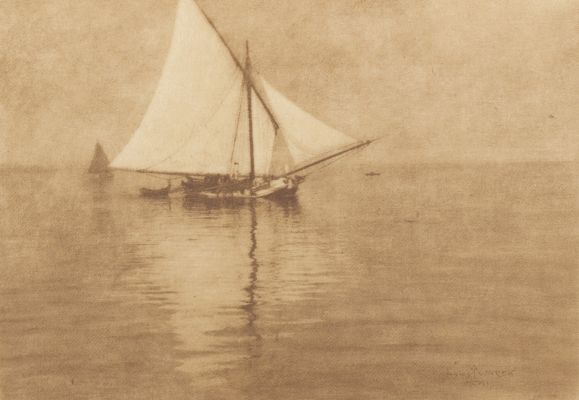
Title
Washerwoman on the DunesArtist
Kuehn, Heinrich (Austrian-German, 1866-1944)Publication
Camera Work XIIIDate
1906Process
PhotogravureAtelier
Manhattan Photogravure Company, NYImage Size
16.8 x 22.8 cm
Heinrich Kuehn (Kuhn) led the pictorial movement in Austria and with Hugo Henneberg and Hans Watzek formed the Trifolium in about 1896. The multiple gum-bichromate process that Kuehn adopted was perfectly suited to his landscape imagery of expansive vistas and to the very large prints he liked to make. Washerwoman on the Dunes, for instance, an image of great visual spaciousness, exists in gum as a 22-by-28-inch print. By 1910 Kuehn was making his own photogravures, although he never printed any of the illustrations that appeared in the pages of Camera Work. Stieglitz devoted an entire issue to Kuehn’s work, presenting fifteen images printed by various means: photogravure (hand-printed grain gravures), mezzotint gravure (machine-printed screen gravures), and duplex-halftone (duotones). [1]
Reproduced / Exhibited
Frank, Waldo D. America and Alfred Stieglitz: A Collective Portrait. New York: Aperture, 1979. pl. 29
References
[1] Peterson, Christian A. Camera Work: Process & Image : [exhibition, Minneapolis, Minneapolis Institute of Arts, August 31-November 3, 1985, Seattle, Seattle Art Museum, November 22, 1985-February 2, 1986]. Minneapolis: Minneapolis Institute of arts, 1985. p. 65.











